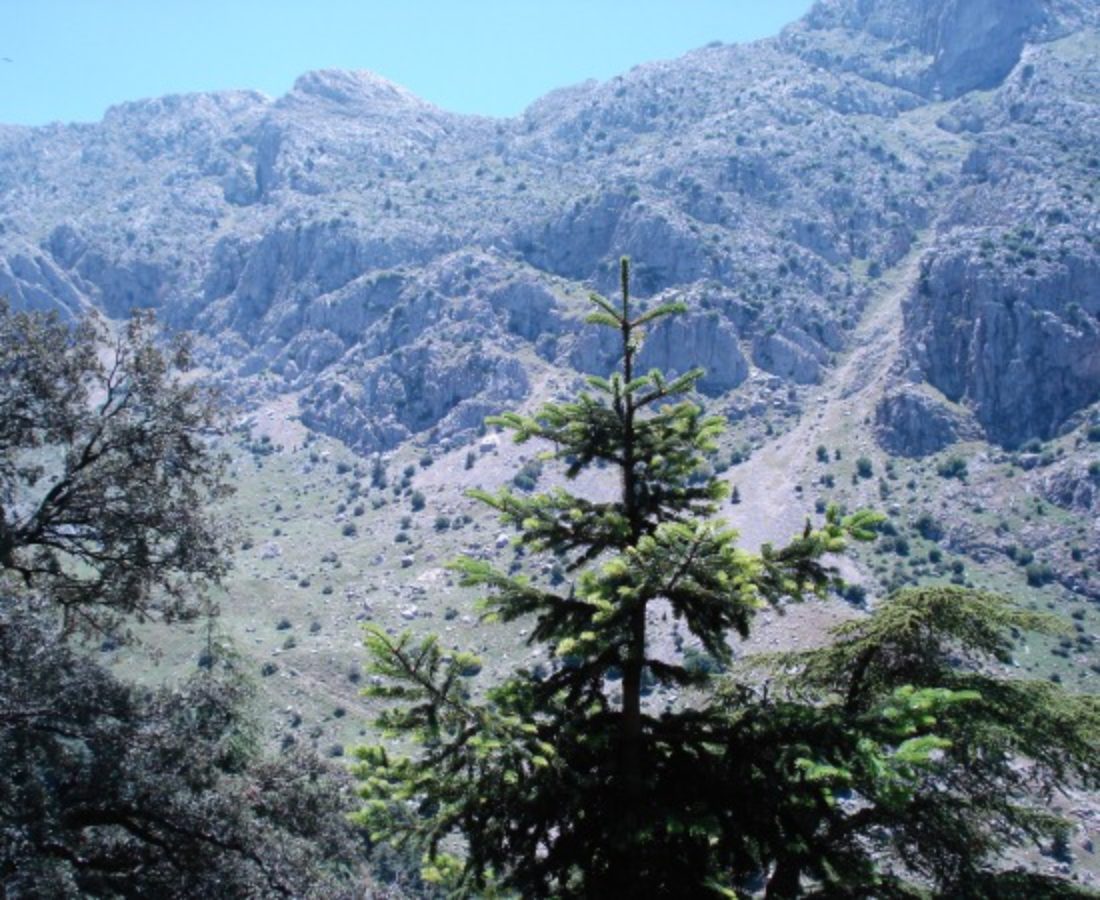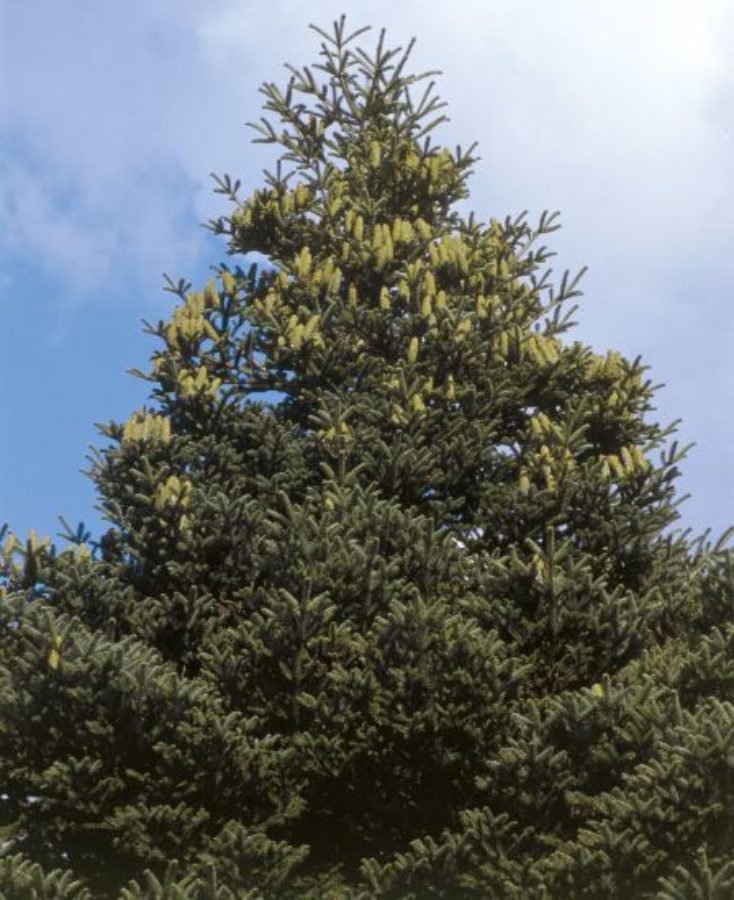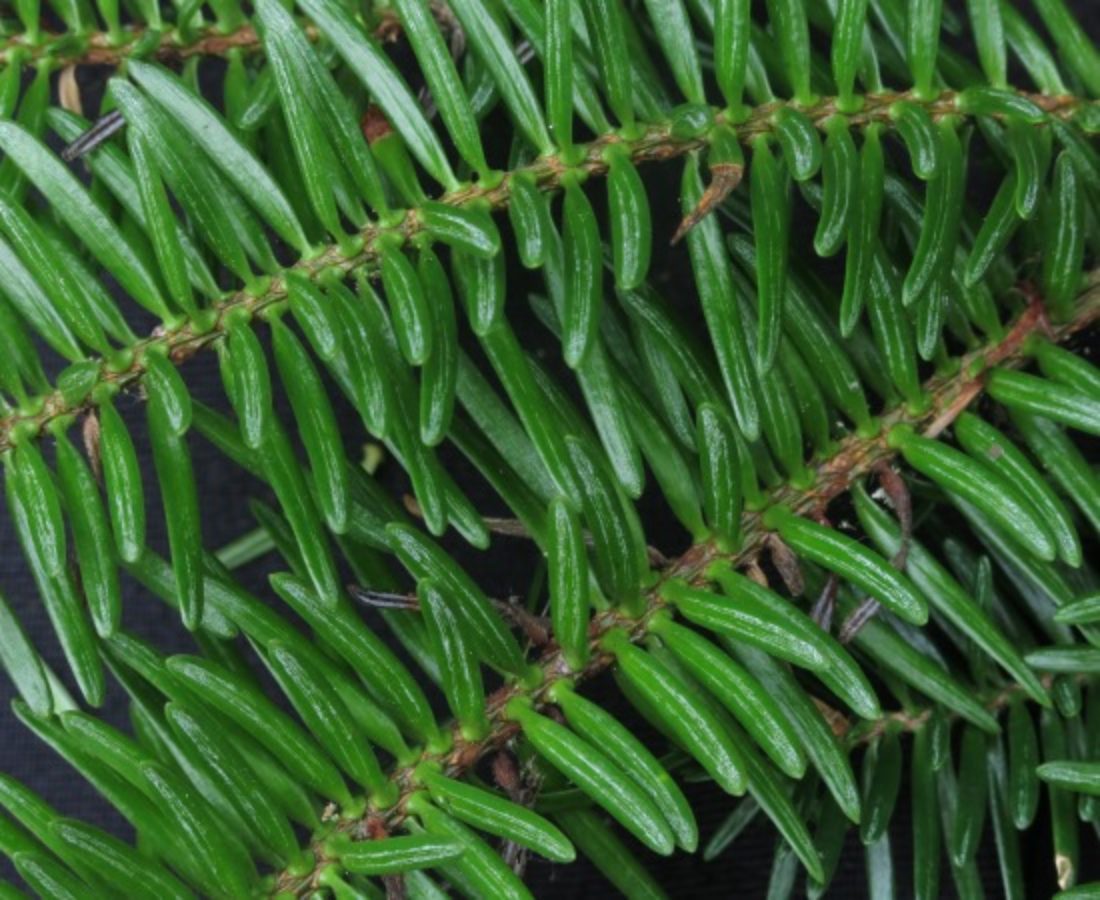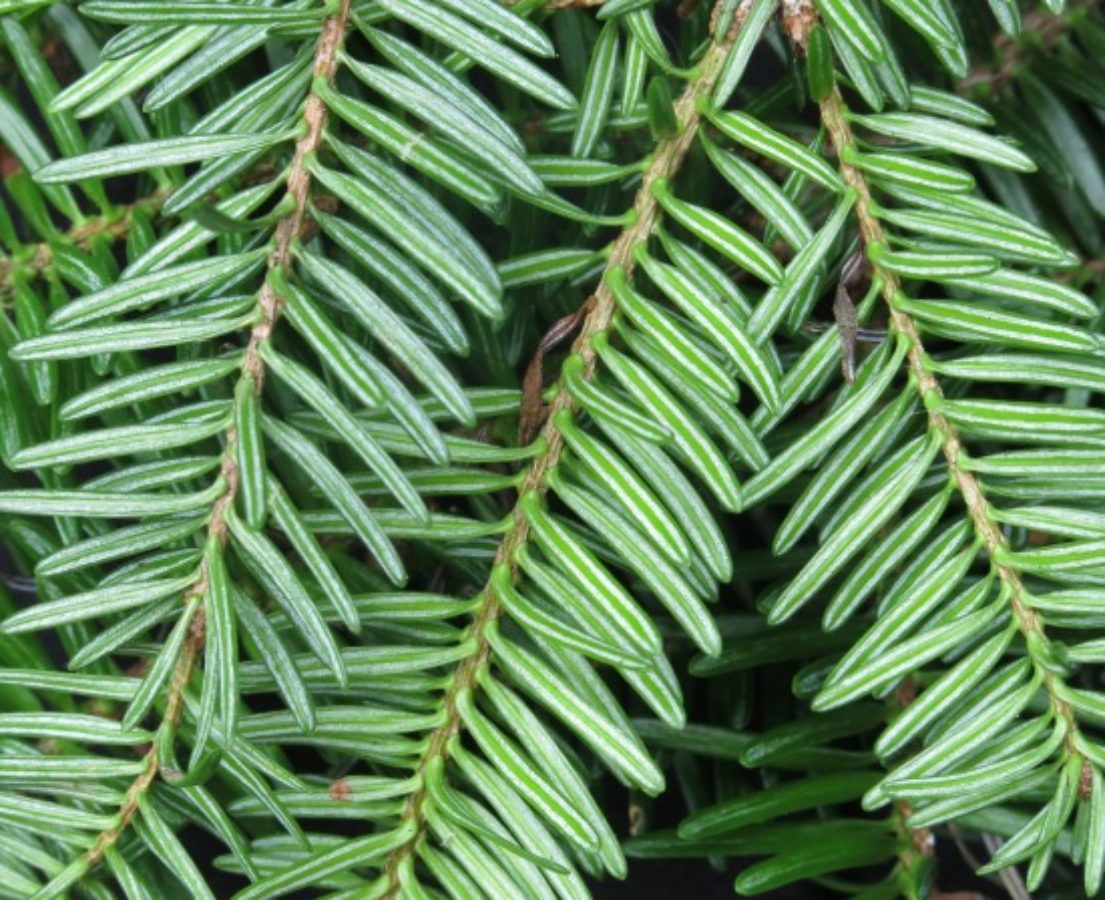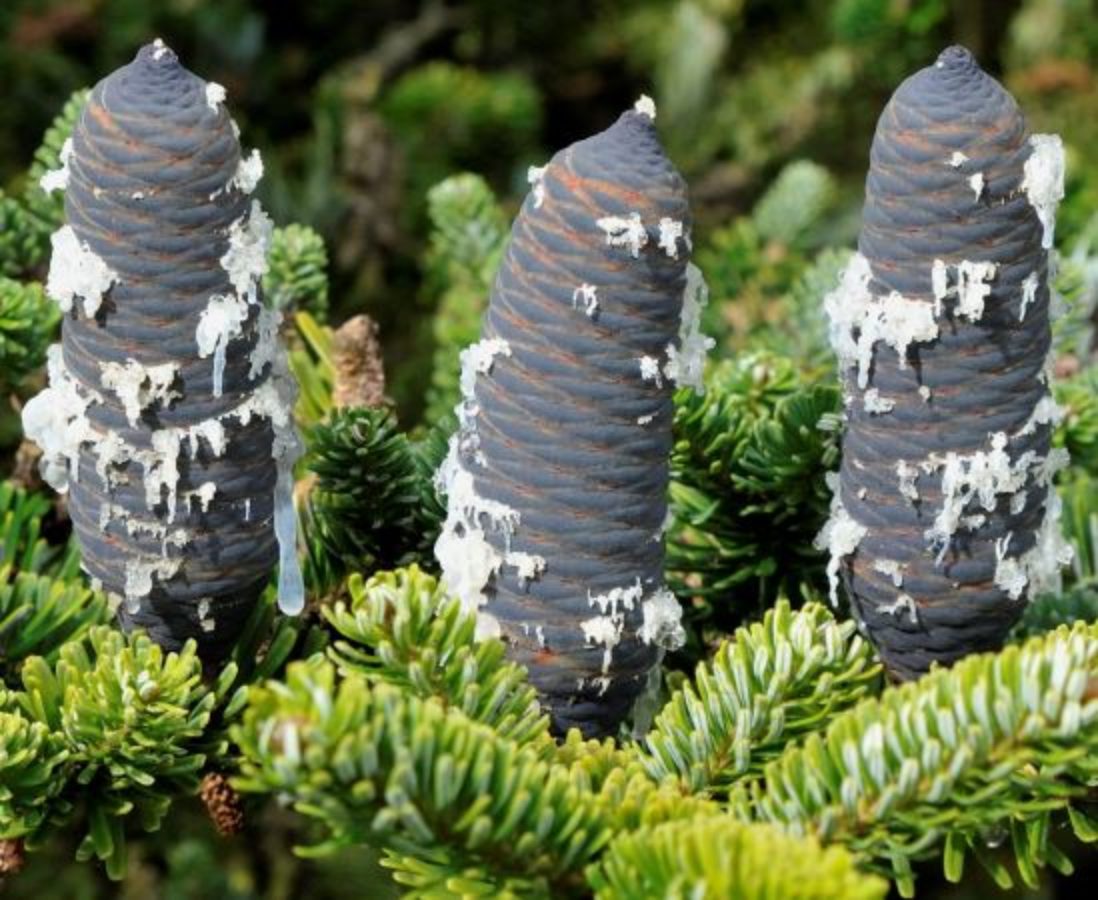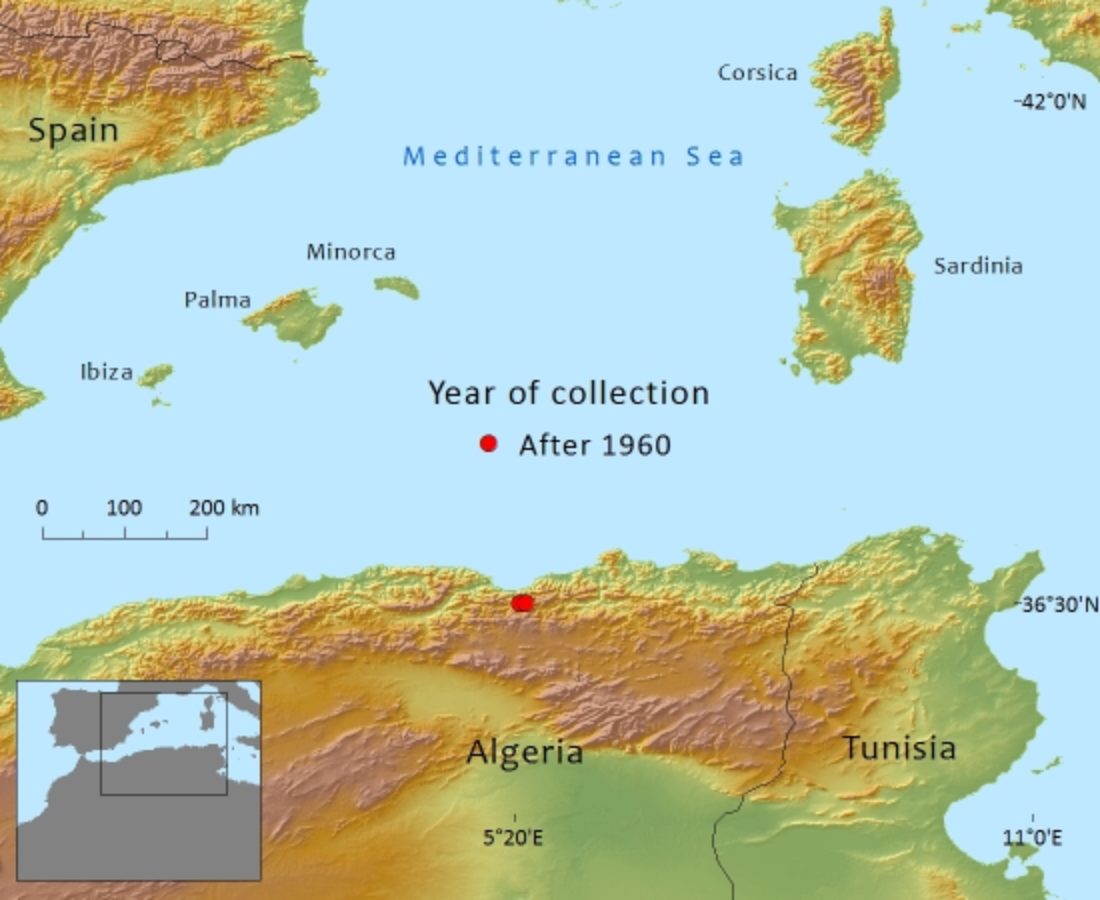Pinaceae
Abies numidica
Endemic to a very small area of the Djebel Babor Mountains in northern Algeria where it is threatened by a combination of fire, fuel-wood collection and grazing by cattle and goats.
Description
Habit
Tree up to 20m tall, dbh 0.5‒1m; crown broadly pyramidal, dense and irregular when old. Bark fissured and scaly, dark grey brown when old. Lower branches sweeping down, middle branches horizontal, upper ascending. Vegetative buds ovoid or broadly conical, not resinous.
Foliage
Leaves spirally arranged all round shoot, shaded foliage parted, 15‒20 x 2‒3mm, twisted or curved at base, linear, flattened, keeled with a prominent midrib below, glaucous green, stomata whitish complete bands below and a large patch near the apex above and tapering down the mid-line, apex obtuse.
Cones
Male cones lateral, crowded, 1‒2.5cm long, yellowish. Female cones erect, cylindrical, 12‒18 x 4‒6 cm, maturing pale purplish brown, bracts included. Seeds 6‒8mm, light brown, winged
Notes
The name Abies numidica is the most widely accepted name in use in modern-day publications; Farjon (2001) and Farjon and Page (1999). Rarely is one of its older synonyms used although the name Abies pinsapo Boiss. var. numidica (de Lannoy ex Carriere) Solomon has recently been used by Eckenwalder (2010).
References and further reading
- Eckenwalder, J. (2010). Conifers of the world: the complete reference. Timber Press, Portland, London.
- FAO Forestry Department. (1986). Databook on endangered tree and shrub species and their provenances. FAO, Rome.
- Farjon, A. and Page, C.N. (compilers) (1999). Conifers. Status Survey and Conservation Action Plan. IUCN/SSC Conifer Specialist Group. IUCN, Gland, Switzerland and Cambridge, UK.
- Gharzouli, R. (2007). Flore et végétation de la Kabylie des Babors etude floristique et phyttosociologique des groupements forestiers et post–forestiers des djebels Takoucht, Adrar Ou-Mellal, Tababort et Babor. Faculté des Sciences, Département de Biollogie, Université Ferhat Abbas.
- Gharzouli, R. and Djellouli, Y. (2005). Diversité floristique de la Kabylie des Babors (Algérie). Sécheresse. 16(3): 217-223.
- Maire, R. (1952). Flore de l'Afrique du Nord. Paris.
- Technoexportstroy. (1970). Parc national du “Babor”. études préliminaires . rapport définitif. Sofia, Bulgaria.
- World Wildlife Fund. (2011). Mediterranean conifer and mixed forests In: Encyclopedia of Earth. Eds. Cutler J. Cleveland (Washington, D.C. : Environmental Information Coalition, National Council for Science and the Environment). [First published in the Encyclopedia of Earth March 2, 2007; Last revised Date February 6, 2011; http://www.eoearth.org/article/Mediterranean_conifer_and_mixed_forests?topic=49597>. (Accessed: 15 May 2010).
- Yahi, N., Knees, S. & Gardner, M. (2011). Abies numidica. In: IUCN 2012. IUCN Red List of Threatened Species. Version 2012.2. . Downloaded on 07 March 2013.
